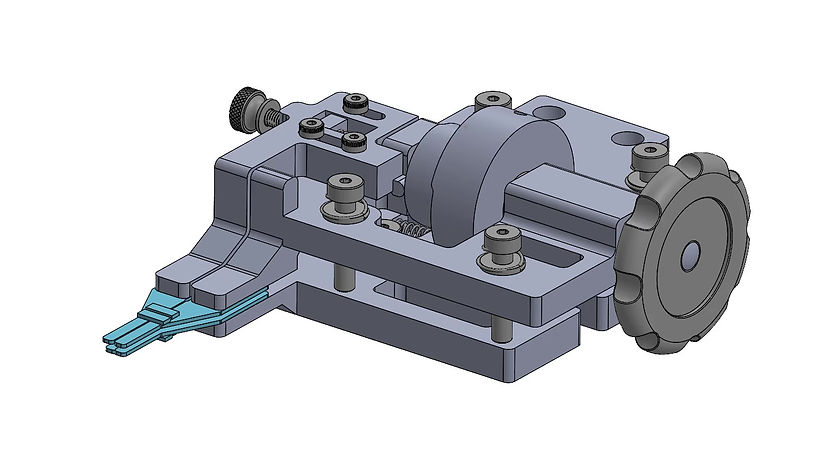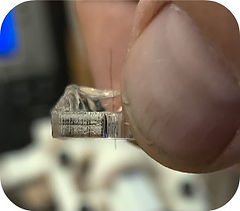MICROELECTRODE "INCHWORM"
BRAIN INSERTION TOOL
GROUP CAPSTONE
FALL SEMESTER 2021
UNIVERSITY OF MASSACHUSETTS LOWELL

Background:
As a part of their curriculum, students need to conduct research on rat brains due to their similar neurological physiology to humans. They use electrode probes which are microns thick to read electrical signals from the rat's brain.
However...
Probe insertions by human hands can damage the probe and its coating as well as the subject’s brain membrane due to improper handling.
Common Problems:
-
Inserting the probe too quickly
-
Pinching Probe too tight
-
Shaky hands
-
Pulling the probe too hard
We were tasked to produce a purely mechanical, cost-effective solution for this issue. Ideally, we wanted our tool to be able to move the probe by 1 mm increments from a single manual crank wheel turn. Hence the movement being "inchworm-like."
I was responsible for mathematical analysis and design considerations for the project.
Design Requirements:
-
Cost-Effective
-
Purely Mechanical
-
Easily sourced parts
-
Moves probe down by 1 mm with one rotation
-
Does not damage the brain membrane
-
Does not damage the probe
-
Buildable by anyone

Grippers
CAMs
Crank Wheel
Final Design:
-
Two CAMs move four grippers on a single axle
-
One crank wheel rotation = 1 mm probe movement down or up
-
3D printed and easily sourced parts
-
Assembly instructions also produced
-
Probe can move up or down depending on wheel turn direction

The data above shows that the grippers do not produce enough force to pierce the probe coating. Therefore, the probes will be undamaged as they move up and down

Result:
The tool successfully inserted a 25 µm thick probe into a model tissue without damaging the probe or its coating. Total fabrication cost of the tool is $330 versus current stereotaxic instruments around $2000 each.

